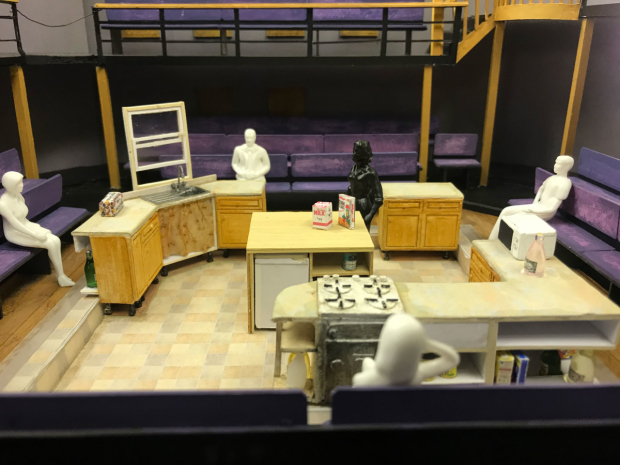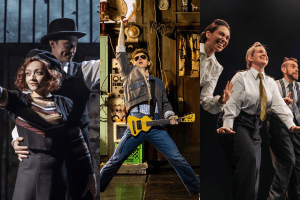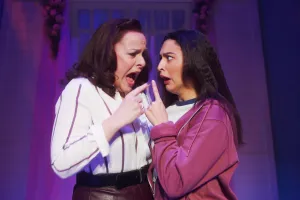Walmart and Texan kitchens: representing modern poverty on the set of Utility
The designer of the Orange Tree’s ”Utility” explains how they researched the set for the show
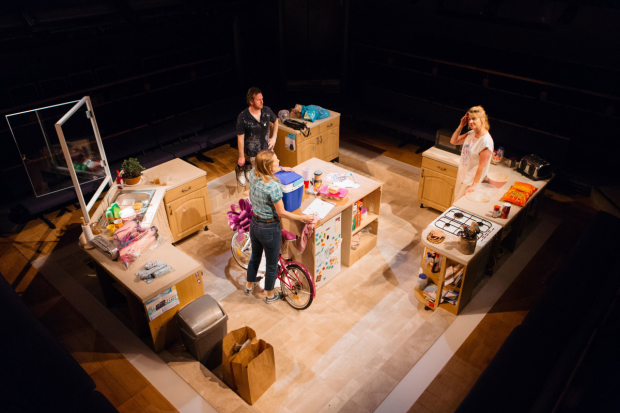
© Helen Murray
On my first reading of Utility, by Emily Schwend, it struck me how the entire story is underscored by the minute detail of everyday domestic chores being played out within the action. This play focuses on a stratum of society whose voice is rarely heard: the 'just-about-managing'. It takes place in the family kitchen, which is like a fifth character in the play, present throughout and telling us as much about these characters and their lives as the words they speak.
The design came about through an unusual process. Rather than focusing on an encompassing visual 'concept' imposed by us as a creative team, we strove to be led by what the play needed and what felt, based on research and lived experience, to be the most likely and realistic version of every element in that space, down to the smallest detail. We were keen to challenge the assumptions we all make about the lives of people with less than ourselves by not exaggerating their poverty for the benefit of a more privileged audience.
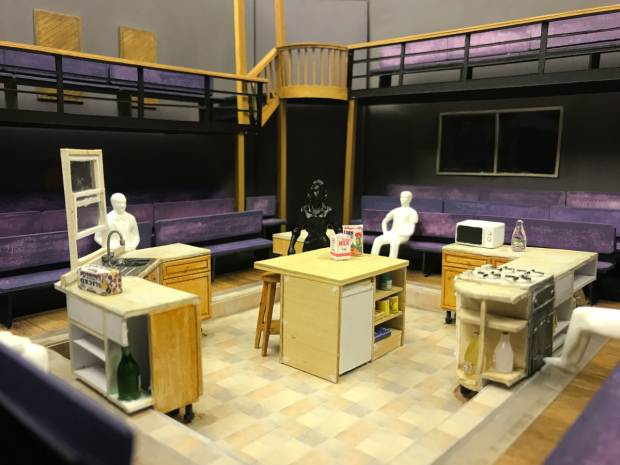
Director Caitlin McLeod and I started by intensively researching the world around the play – reading up on the alarming realities of low wage work in the USA and what it's like for the millions of US citizens whose daily experience is working several jobs while just about keeping their head above water. This was aided by Google street view tours of East Texas towns, films and TV shows set in East Texas, like Bernie, and hours spent researching products on the websites of stores like Walmart and the Food Lion, that are mentioned throughout the play.
This was followed by sourcing hundreds of images of Texan kitchen styles and creating a 3D visualisation of what the actual kitchen and surrounding rooms would look like if they were part of a real home. Finally, I built a scale model with the walls, windows, and doors removed creating a porousness to allow the audience to peer inside. I also collaborated closely with our lighting designer, Emma Chapman, to create a box of light to frame the space and transport us through the transitions in a dreamlike way.
Designing a fully functioning kitchen for an in-the-round space was probably the biggest challenge. Rather than a fourth wall box set, our design is an inside-out space that is intended to work and feel like a real kitchen to the characters that inhabit it from within. The audience is invited to look in, but like the title of the play, the set is about function, not aesthetics. The unique relationship in the Orange Tree between the audience and performer also works at times to our advantage; when the characters make breakfast you can smell the toast and see the steam on the mac 'n' cheese.
The final piece of the jigsaw puzzle is the set dressing; we've had to fill the kitchen with groceries, crockery and appliances that get used during each performance. Our stage management team have been working tirelessly to source or make every item on stage as authentically as possible, even the tins lurking in the corners of cupboards. Every product you see came from Walmart or an equivalent US superstore. It's this level of detail that will hopefully help people feel immersed in the narrative. It would have been easy to exaggerate the "American-ness" (make everything massive!) or the "poorness" (more dirt and decay!), as theatre makers frequently do, but to do so in this case would have felt – to us – dishonest and disrespectful to Schwend's delicately observed play, and to the real lives of the people whose story it tells.
